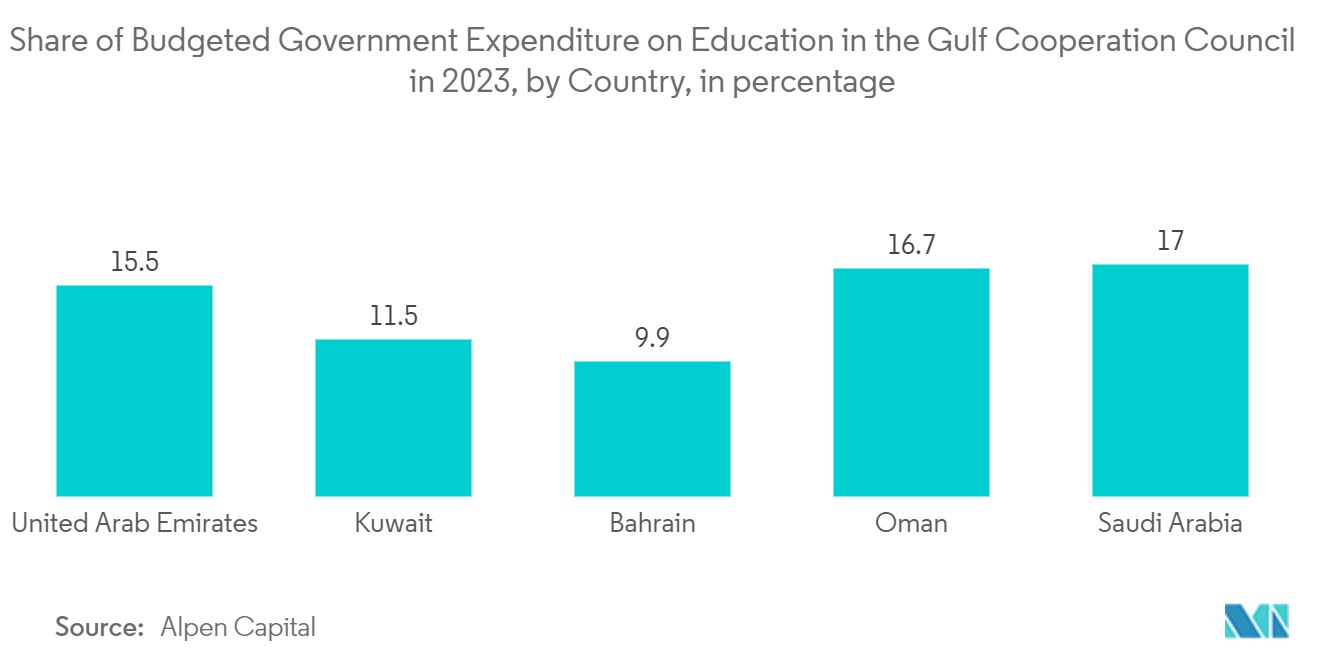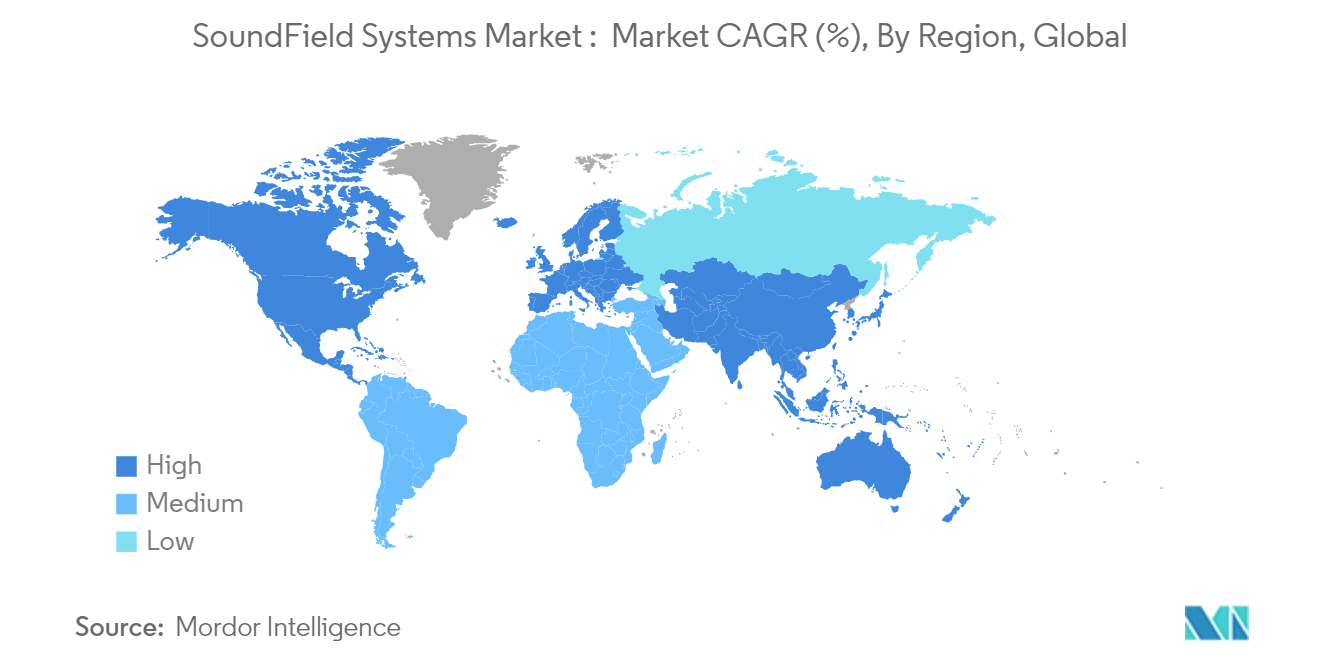Market Trends of SoundField Systems Industry
SoundField System Products is Expected to Hold Major Market Share
- SoundField systems products employ a wireless microphone, speakers, a receiver to capture the wireless signal, a mixer to incorporate additional microphones or media sources such as DVD and MP3, a power amplifier, and a minimum of four strategically positioned ceiling-mounted speakers within the classroom to effectively convey the teacher's voice to the students.
- The teacher uses the microphone, providing clear communication throughout the whole classroom, evenly distributed by the fixed wall speakers. Depending on the instructional approach or the nature of the lesson, various types of microphones may be utilised, including a tie clip microphone, a headset microphone, a neck-worn microphone, or even a pendant microphone that is worn around the instructor's neck.
- An essential component of a soundfield system product is the configuration of overhead speakers. The effectiveness of a Soundfield system largely depends on the establishment of a uniform sound layer throughout the classroom. This sound layer should be positioned between 3 to 6 feet above the floor and should encompass the higher frequencies ranging from 2kHz to 16kHz, which are linked to consonant sounds.
- The soundfield speaker represents a specialised auditory solution that actively modifies sound to enhance the educational atmosphere for all participants. By ensuring a uniform distribution of sound among the instructor, the students, and any multimedia devices, soundfield speakers significantly enhance the listeners' comprehension of spoken language.
- Across the globe, architects, facility professionals, and school administrators are looking for ways to improve the educational environment, which will further drive market growth. For instance, in May 2024, the United Kingdom government obtained an extra EUR 80 million (USD 89.31 million) in capital funding for education this year. This funding will facilitate the construction of fifteen significant new building, extension, and refurbishment projects for schools across various sectors, in addition to initiating a new program focused on curriculum-led investment.
- The rising government expenditure on educational infrastructure will contribute to the market growth. According to the Alpen Capital, the government of UAE has spent 15.5 % on the education sector in FY 2023.

Asia Pacific is expected to Hold Major Market Share
- The education industry is one of the fastest developing sectors across the region. As digital education becomes more prevalent in schools and colleges, classes and lectures are effectively conducted using a variety of seamless soundfield systems. The future growth potential for digital education solution providers appears promising, as an increasing number of educational institutions are adopting these advanced e-learning solutions.
- In large classrooms, not all teachers can project their voices to reach every student. Enter the soundfield system, a device designed to amplify a teacher's voice. With this system, a teacher's voice can be heard clearly from distances of up to 100 meters. Research indicates that when a teacher's voice stands out against background noise, listeners tend to focus more, effectively diminishing the surrounding noise. Thus, the SoundField system not only amplifies and clarifies the speaker's voice but also minimizes ambient noise.
- India occupies a significant position within the global education sector. It boasts one of the largest networks of higher education institutions worldwide. Nevertheless, there remains considerable potential for further advancement and enhancement of the education system.
- As reported by IBEF, India boasts a school-going student population exceeding 250 million, surpassing that of any other nation. In the Interim Budget for 2024-25, the budget allocation for the Department of School Education & Literacy for the fiscal year 2024-2025 is set at INR 73,498 crores (approximately USD 8.82 billion), marking the highest allocation to date.
- Moreover, as of 2023, China reported a total of 498,300 educational institutions across various levels and types, which is a reduction of 20,200 compared to the prior year, indicating a decline of 3.9%. The total enrollment across all educational levels reached 291 million students, reflecting a decrease of 1,512,600 students, or 0.52%, from the previous year. Additionally, the number of full-time teachers in China stood at 18,917,800, representing an increase of 114,200, or 0.6%, from the year before.
- China has also augmented its investment to enhance educational infrastructure. In 2023, the central government allocated nearly RMB 40 billion (USD 5.57 billion) to execute significant initiatives aimed at bridging gaps in compulsory education. The development of primary and secondary schools has become more standardized, resulting in notable advancements in the dimensions of school buildings as well as the availability of facilities and equipment. Additionally, the central government has increased the minimum public expenditure allocated per student in compulsory education institutions.
- Thus, the growing number of schools and increasing investment in the educational infrastructure in the region will propel the demand for soundfield systems market.


